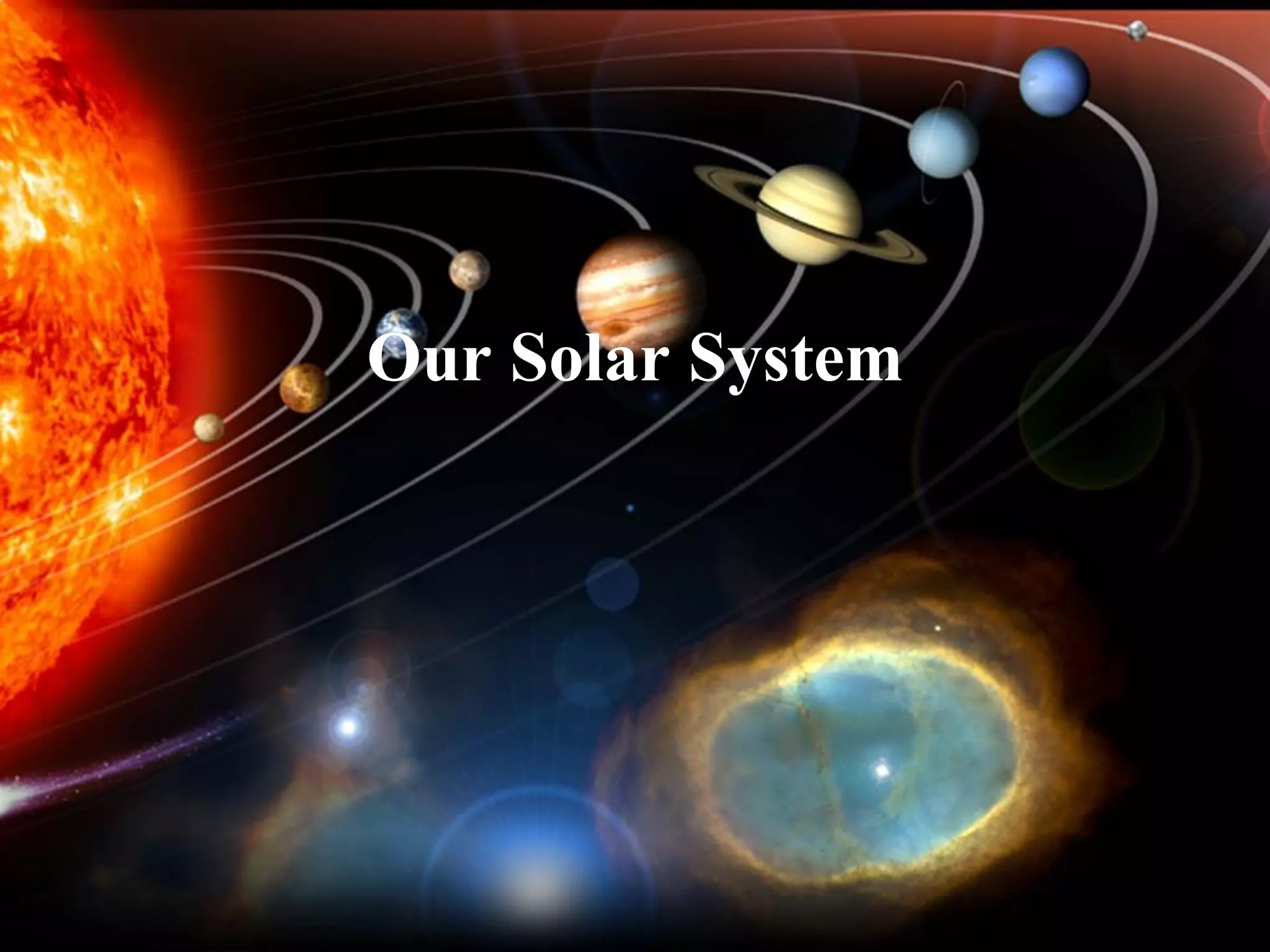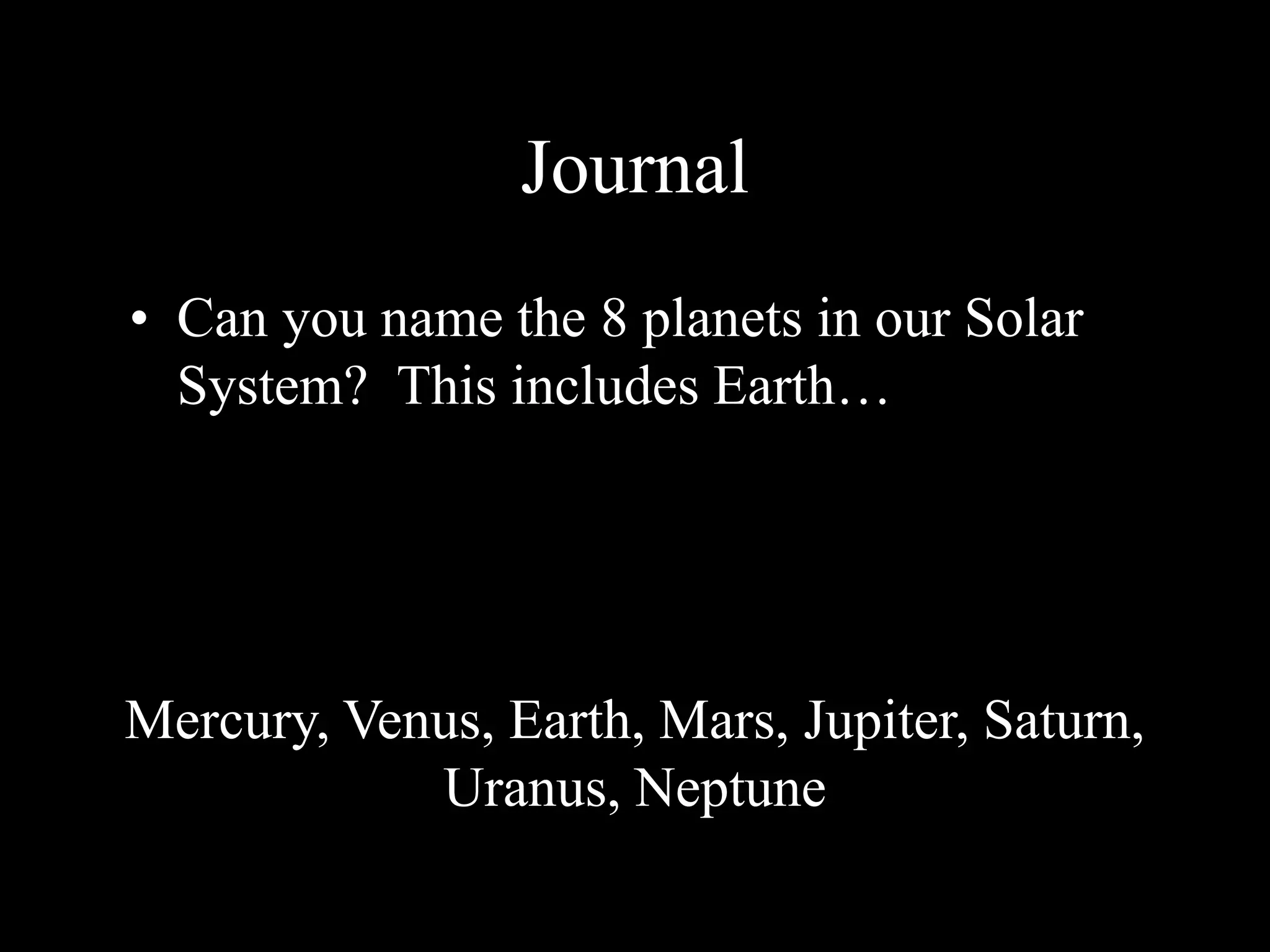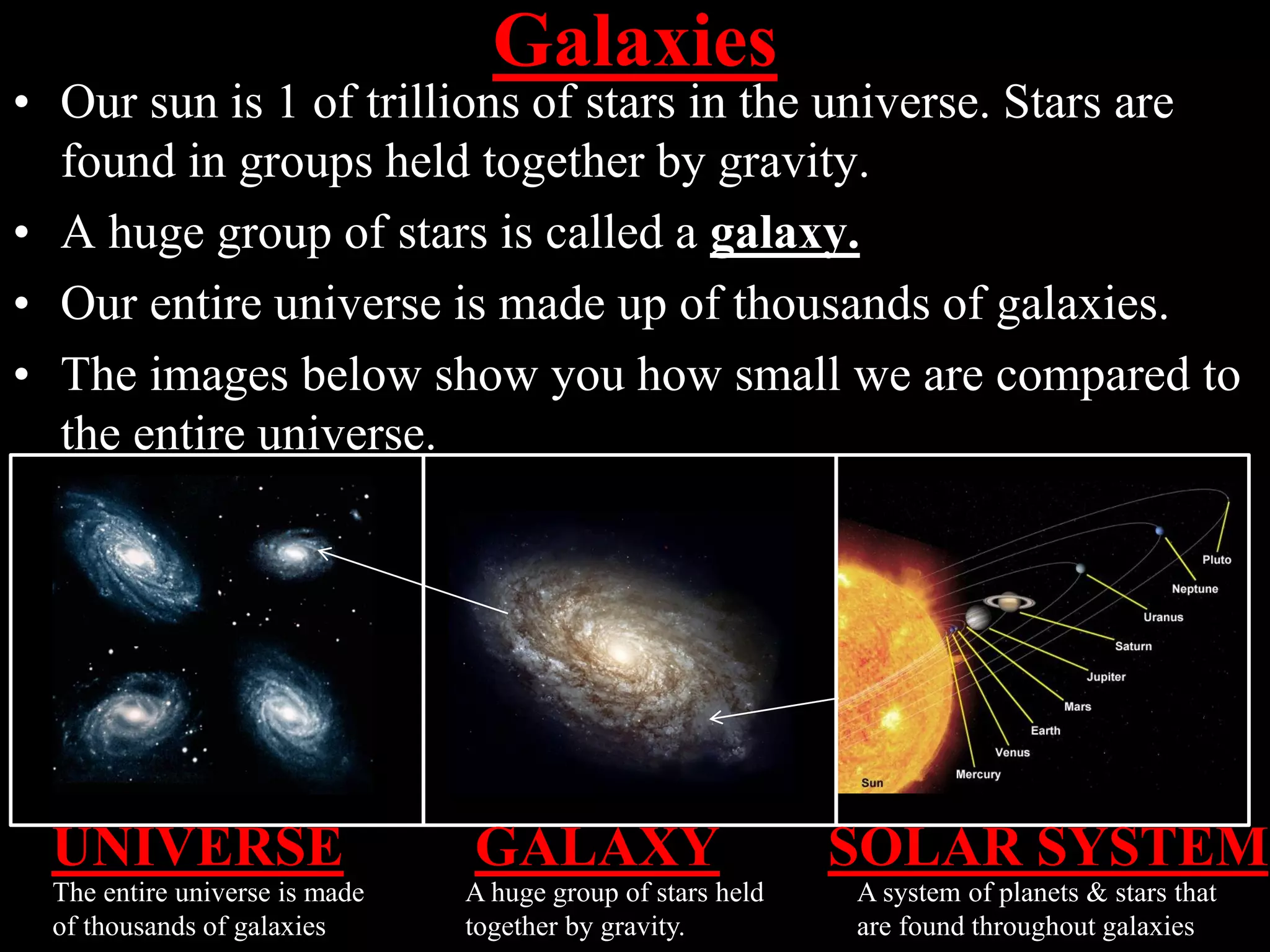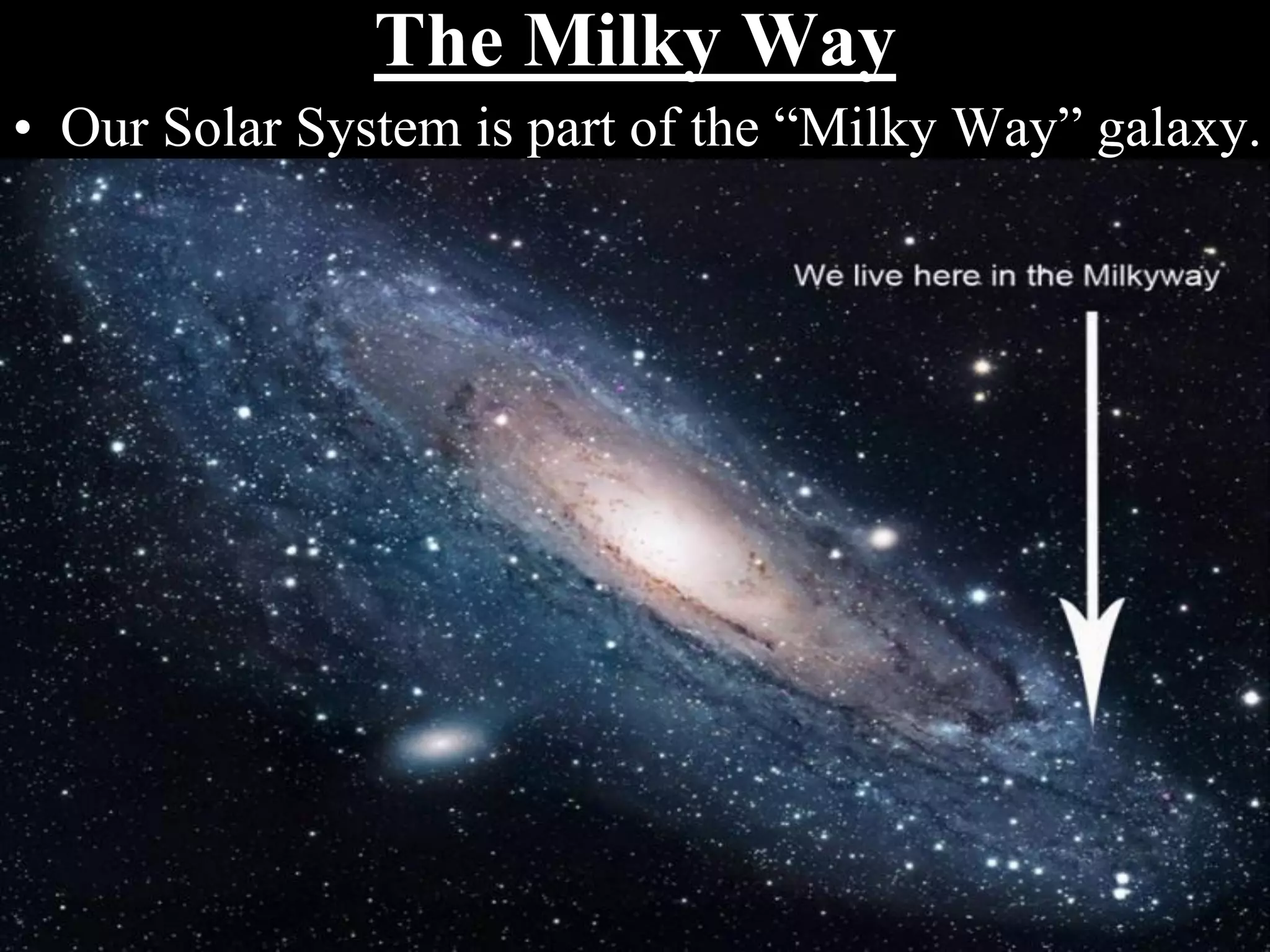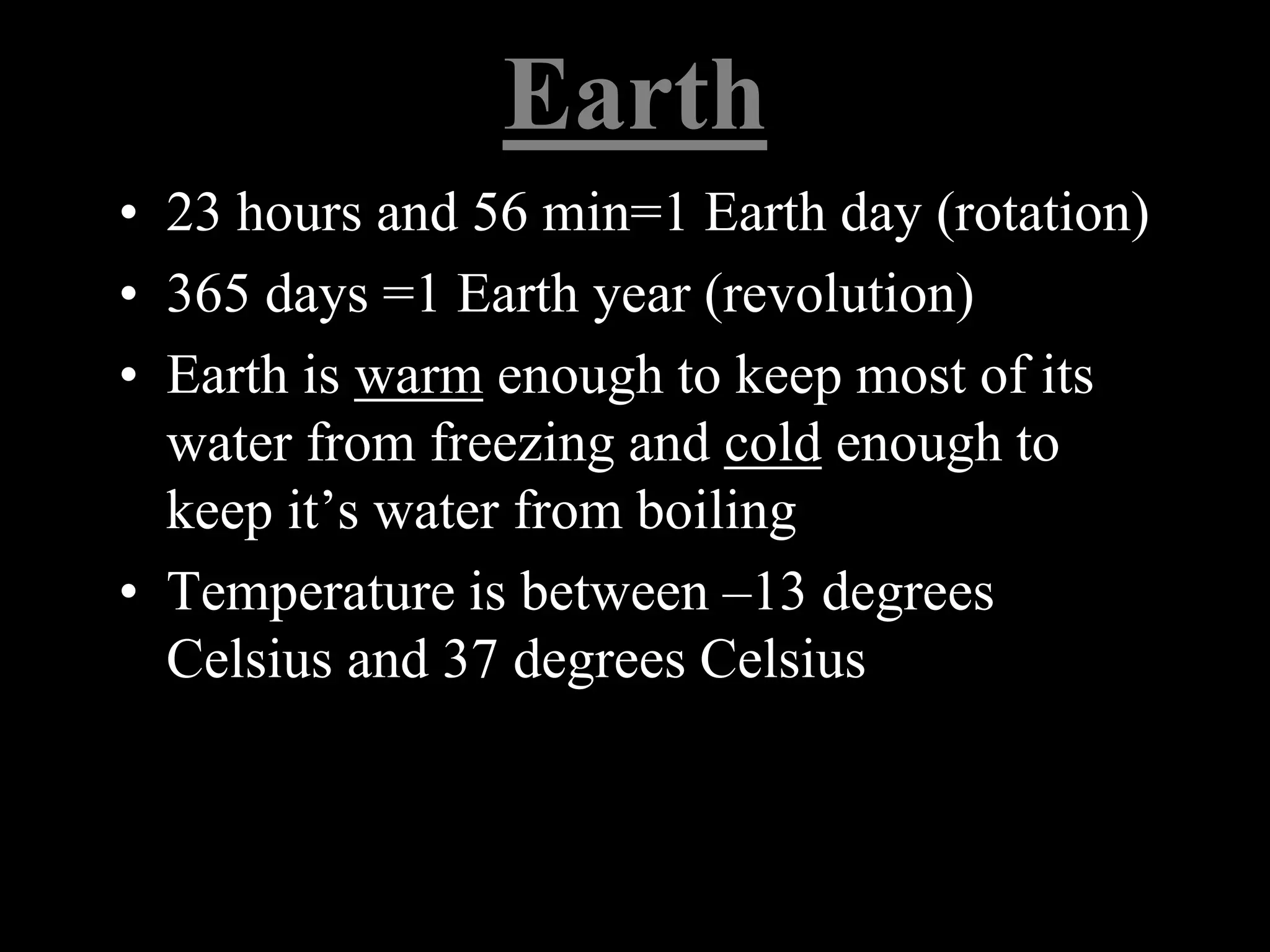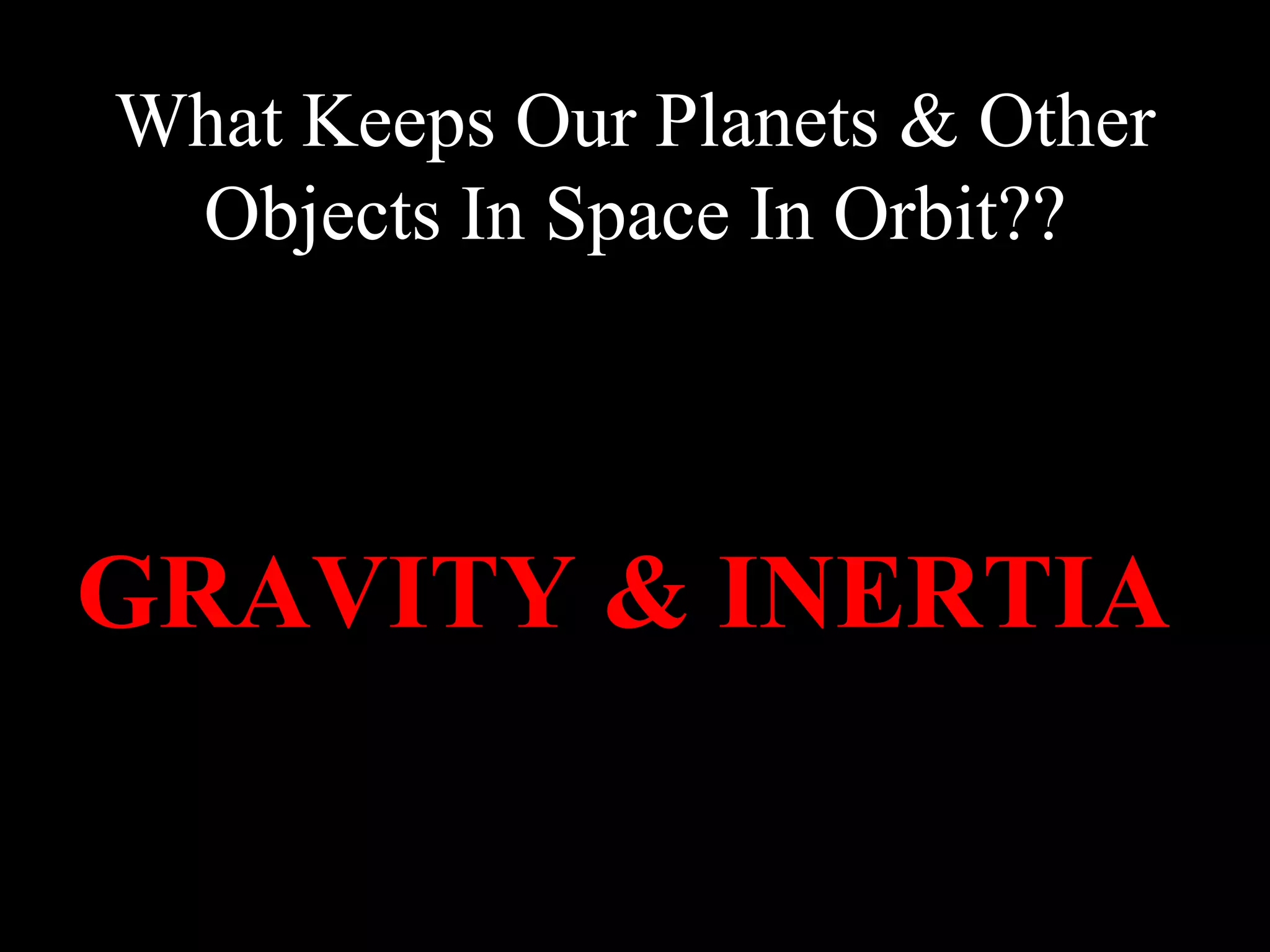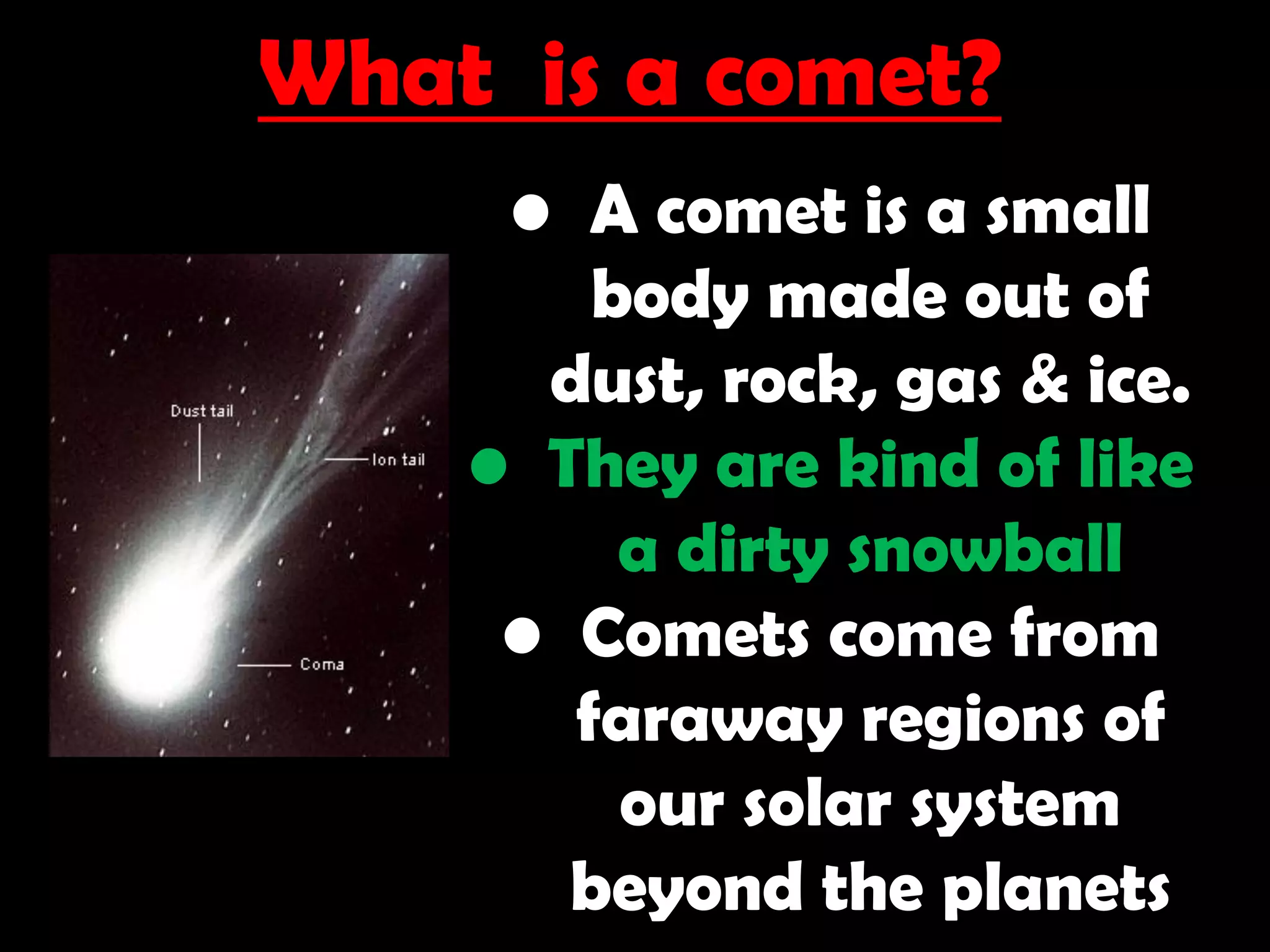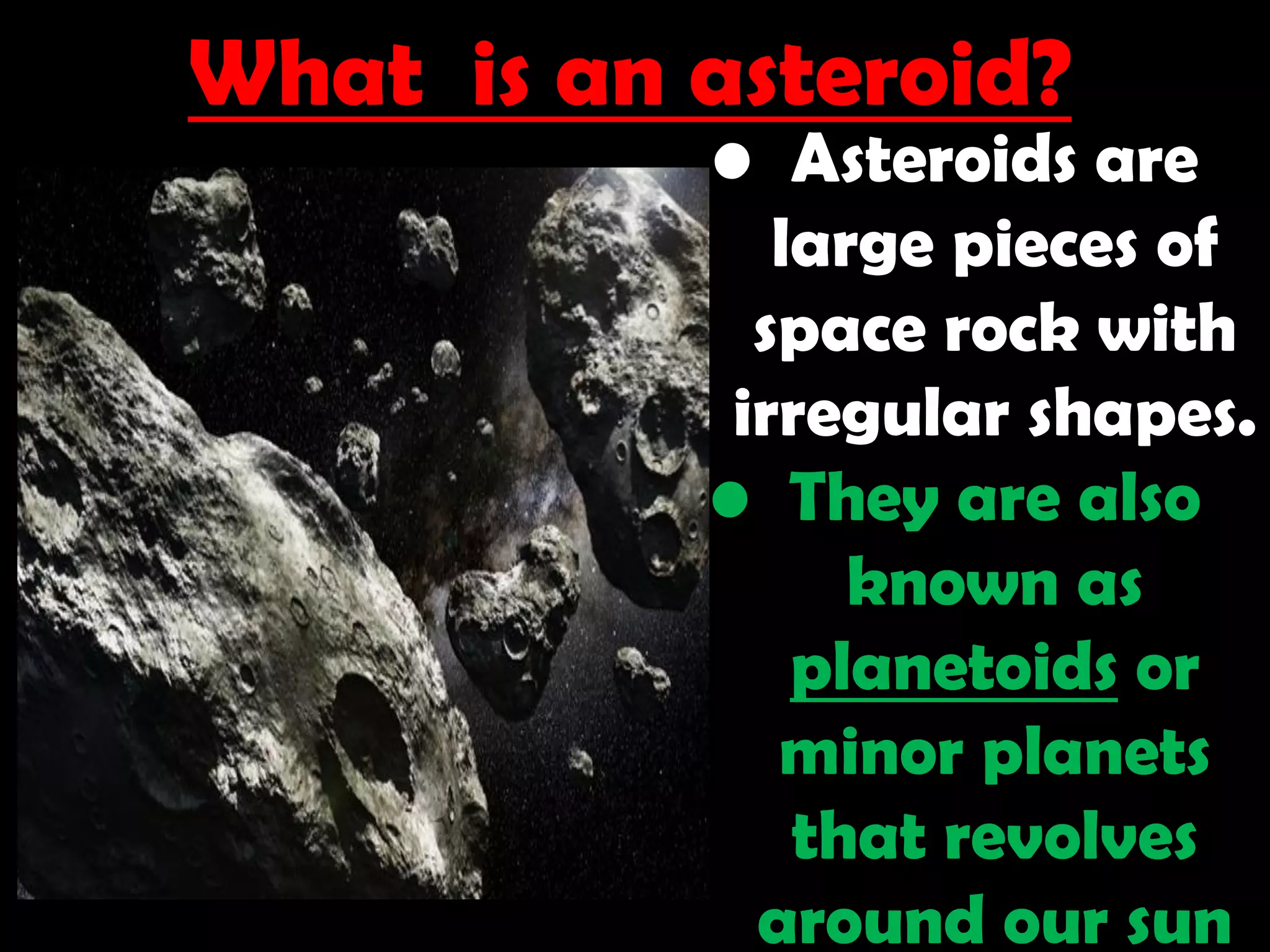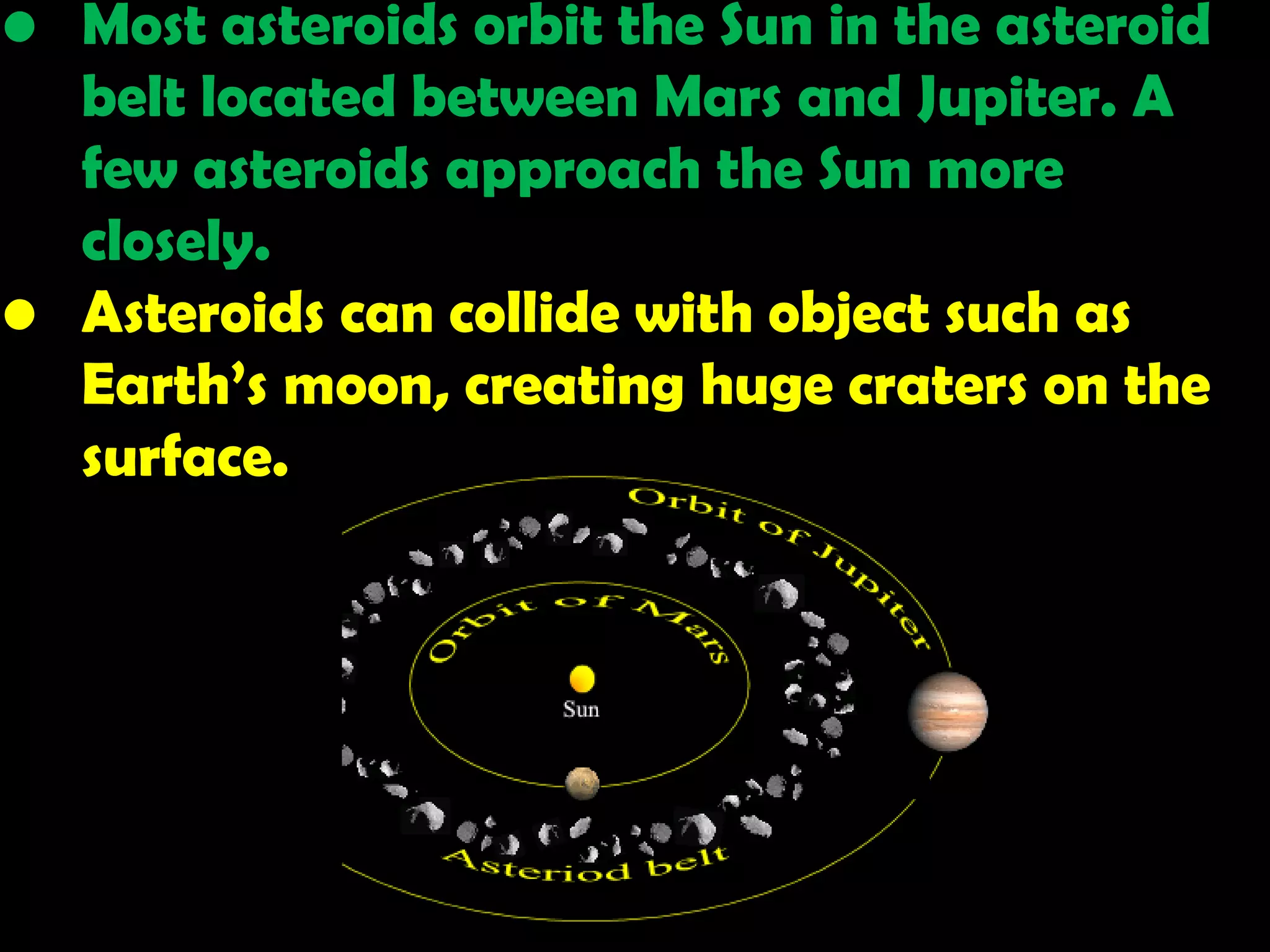Our Solar System consists of 8 planets that orbit our star, the Sun. The planets can be divided into inner terrestrial planets like Earth and Mars, and outer gas giants like Jupiter and Saturn. Gravity and inertia work together to keep the planets and other objects like the Moon in stable orbits around stellar bodies. Beyond the planets are smaller objects like comets, asteroids, and meteoroids. Comets are icy bodies that develop tails as they near the Sun, while asteroids orbit mainly in the asteroid belt between Mars and Jupiter. Meteoroids are asteroid fragments that can burn up as meteors in Earth's atmosphere or survive as meteorites.
